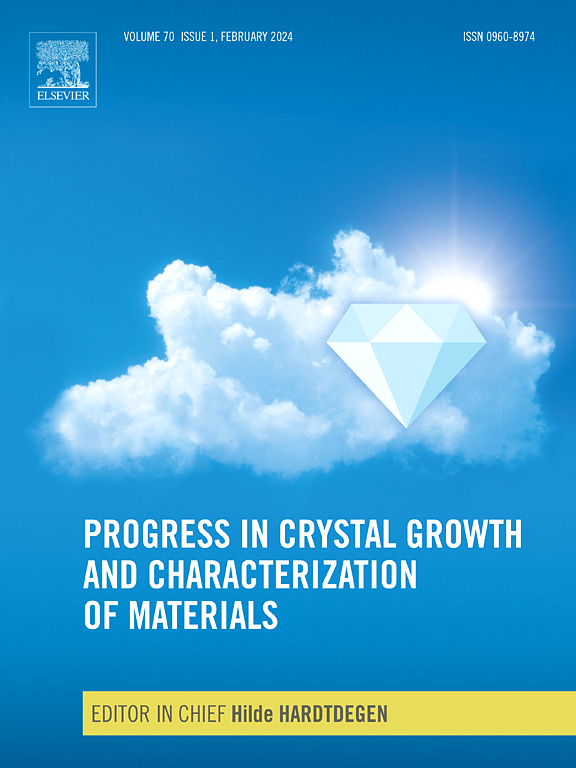Metastable zone width of different solute-solvent systems during cooling crystallization: Experimental observations and their interpretation
IF 1.9
2区 材料科学
Q1 CRYSTALLOGRAPHY
Progress in Crystal Growth and Characterization of Materials
Pub Date : 2024-12-14
DOI:10.1016/j.pcrysgrow.2024.100657
引用次数: 0
Abstract
Experimental observations of metastable zone width (MSZW) of various solute−solvent systems obtained by cooling crystallization at controlled rates RL are reviewed and interpreted from the standpoint of deterministic theoretical models based on the classical three-dimensional (3D) nucleation theory containing two nucleation parameters: effective solid−solvent interfacial energy γeff and preexponential factor A for nucleation. After a brief introduction to the parameters F and F1 of the models in terms of nucleation parameters of the classical nucleation theory and the effects of additives contained in the solution on the nucleation parameters A and γeff, typical experimental data of MSZW for selected solute−solvent systems are described and discussed according to the models to observe general trends of variations of γeff and A as functions of solution saturation temperature T0 and concentration ci of additives contained in the saturated solutions of different systems. Thereafter the observed general trends of variations of γeff and A as functions of solution saturation temperature T0, solvent and concentration ci of additives contained in the saturated solutions of different systems are discussed. The dimensions of 3D nuclei formed during MSZW of different systems and the limitations and applicability of deterministic models in crystallization processes are then presented and discussed. Finally, a summary of the contents of the review is given.

不同溶质-溶剂体系在冷却结晶过程中的亚稳区宽度:实验观察及其解释
本文综述了不同溶质-溶剂体系在控制速率RL下冷却结晶得到的亚稳区宽度(MSZW)的实验观测结果,并从确定性理论模型的角度进行了解释,该模型基于经典三维成核理论,包含两个成核参数:有效固-溶剂界面能γeff和成核的指前因子A。根据经典成核理论的成核参数简要介绍了模型的参数F和F1,以及溶液中添加剂对成核参数a和γeff的影响。根据所建立的模型,对所选溶质-溶剂体系的典型实验数据进行了描述和讨论,观察了γ - eff和A随溶液饱和温度T0和不同体系饱和溶液中添加剂浓度ci变化的一般趋势。然后讨论了不同体系饱和溶液中γ - eff和A随溶液饱和温度T0、溶剂和添加剂浓度ci变化的一般趋势。然后讨论了不同体系在结晶过程中形成的三维核的尺寸以及确定性模型在结晶过程中的局限性和适用性。最后,对本文的研究内容进行了总结。
本文章由计算机程序翻译,如有差异,请以英文原文为准。
求助全文
约1分钟内获得全文
求助全文
来源期刊

Progress in Crystal Growth and Characterization of Materials
工程技术-材料科学:表征与测试
CiteScore
8.80
自引率
2.00%
发文量
10
审稿时长
1 day
期刊介绍:
Materials especially crystalline materials provide the foundation of our modern technologically driven world. The domination of materials is achieved through detailed scientific research.
Advances in the techniques of growing and assessing ever more perfect crystals of a wide range of materials lie at the roots of much of today''s advanced technology. The evolution and development of crystalline materials involves research by dedicated scientists in academia as well as industry involving a broad field of disciplines including biology, chemistry, physics, material sciences and engineering. Crucially important applications in information technology, photonics, energy storage and harvesting, environmental protection, medicine and food production require a deep understanding of and control of crystal growth. This can involve suitable growth methods and material characterization from the bulk down to the nano-scale.
 求助内容:
求助内容: 应助结果提醒方式:
应助结果提醒方式:


